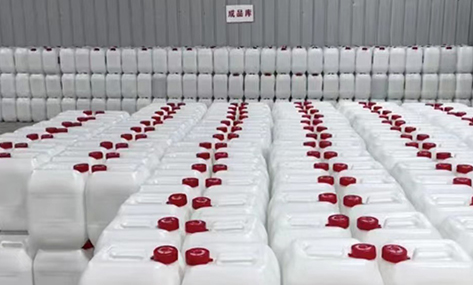
12 月 . 06, 2024 03:15 Back to list
glacial acetic acid molar concentration
Understanding Glacial Acetic Acid and Its Molar Concentration
Glacial acetic acid (C₂H₄O₂), a colorless and hygroscopic liquid, is one of the simplest carboxylic acids. It is known for its strong odor and is a crucial chemical in both laboratory and industrial environments. The term glacial refers to its ability to solidify at low temperatures, forming ice-like crystals when cooled. This property, combined with its status as a highly concentrated form of acetic acid, makes it a vital substance in various applications, including food preservation, chemical synthesis, and even as a solvent in organic chemistry.
The molar concentration, measured in moles per liter (mol/L), indicates the amount of a substance in a given volume of solution. For glacial acetic acid, this measurement is particularly important because it determines the strength and reactivity of the acid in various chemical reactions. With a molar mass of approximately 60.05 g/mol, glacial acetic acid can be converted to molar concentrations using its density—around 1.049 g/mL at room temperature.
To calculate the molar concentration of glacial acetic acid, one must first understand its density—it provides insight into how much mass exists in a given volume. For instance, 1 liter of glacial acetic acid weighs approximately 1,049 grams. To find its molar concentration, we can use the formula
\[ \text{Molar Concentration (M)} = \frac{\text{mass of solute (g)}}{\text{molar mass (g/mol)} \times \text{volume of solution (L)}} \]
For glacial acetic acid, substituting the known values results in
\[ \text{Molar Concentration (M)} = \frac{1049 \, \text{g}}{60.05 \, \text{g/mol} \times 1 \, \text{L}} \approx 17.43 \, \text{mol/L} \]
glacial acetic acid molar concentration

This value signifies that glacial acetic acid is a highly concentrated solution, making it a powerful reagent in chemical processes. Its acetic acid content, when diluted, can be adjusted based on the requirements of specific reactions or applications.
In industrial settings, glacial acetic acid serves a variety of functions. It is primarily used in the production of acetate esters, which are vital solvents in the manufacture of paints, adhesives, and coatings. Additionally, glacial acetic acid acts as a precursor for the synthesis of synthetic fibers, plastics, and various chemicals, emphasizing its significance in the broader chemical industry.
In laboratories, glacial acetic acid is often used as a reagent or solvent. Its high purity and volatility make it ideal for organic synthesis, where it can act as a catalyst or reactant in esterification reactions to produce esters. Furthermore, it is commonly employed as a titrant in volumetric analysis due to its strong acidic properties, helping to determine the concentration of bases and other alkaline substances in solution.
Despite its widespread use, glacial acetic acid must be handled with caution. It is classified as a corrosive and can cause burns upon contact with skin or mucous membranes. The inhalation of vapors can lead to respiratory difficulties, emphasizing the need for appropriate safety measures, such as working in a well-ventilated area, wearing protective equipment, and understanding proper storage protocols.
Furthermore, the concentration of glacial acetic acid can significantly affect its reactivity and the outcome of chemical reactions. Higher concentrations can lead to aggressive reactions, which necessitate careful scaling and monitoring in experimental setups. Conversely, dilution with water or other solvents can modulate its behavior, rendering it safer for specific applications while still retaining its desirable properties.
In conclusion, understanding the molar concentration of glacial acetic acid is essential for its effective and safe usage in both industrial and laboratory settings. Its highly concentrated form serves as a foundation for numerous chemical applications, highlighting the importance of accurate measurements, proper handling, and a thorough grasp of its chemical properties. As a versatile solvent and reagent, glacial acetic acid continues to play an indispensable role across various fields of chemistry, emphasizing the need for ongoing education in its handling and application.
